Chai Style Home: From Memphis to New Guinea
Ray Ann Kremer and George Shapiro traveled the globe, even to remote towns in Australia and Africa, to collect art.
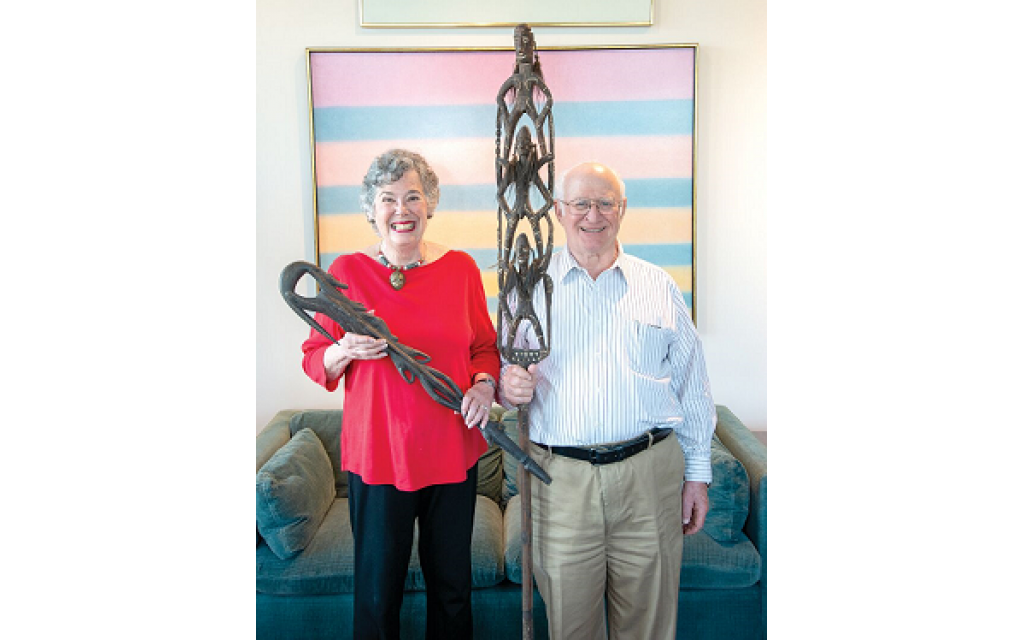
When Ray Ann Kremer merged households with George Shapiro, they threw out the rules, culminating in a standout collection of art empowerment. Under Kremer’s watchful eyes, their Buckhead loft is replete with memories, hard to miss exotica, and the clarity of light. These seniors traveled the globe to collect art and experience other cultures. “I’ve always had a fascination with non-Western art,” Kremer said.
“We spent three weeks circumnavigating New Guinea, the second largest island in the world. Their culture is about fishing and sweet potato farming. No roads, no running water, no electricity. Their art is basic and spiritual.”
Overseeing the Atlanta skyline, the Kremer-Shapiro patio spans 18 feet by 50 feet. Guests are greeted by a painting on plywood by Thornton Dial. A painting by Nigerian chief Z.K. Oloruntoba (Yoruba Group) is above the front door.
Get The AJT Newsletter by email and never miss our top stories Free Sign Up
Jaffe: Here we are in the heart of Buckhead, yet this space has the vibe of something in a Manhattan Soho loft or our BeltLine.
Shapiro: We like the red brick, exposed pipes and beams which highlight the art.
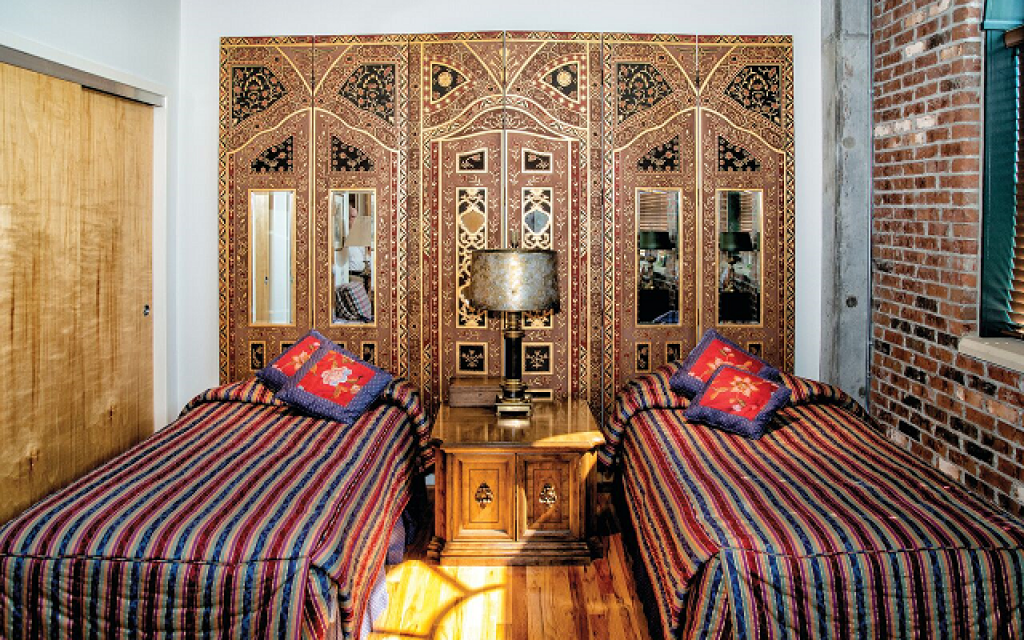
The 14-foot ceilings lend openness with the stark white walls as a backdrop to the art. We got in on the design stages of our building.
Kremer: If you like your things, they will find a way to work together. I’ve always related art to perception. We all see things differently. We relate to color and design because we see it in our own way. I like to mix primitive, contemporary and antiques.
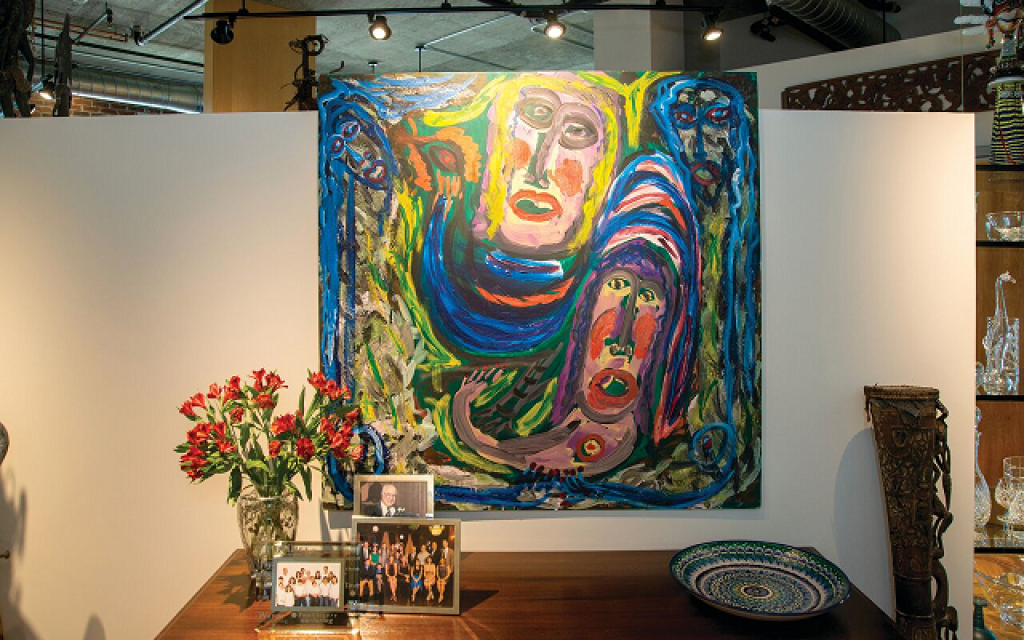
Jaffe: Describe your fascination with indigenous places.
Kremer: We are interested in experiencing different cultures. Art is only one aspect. When we travel to remote areas, we understand that they have basically nothing in the way of tools and supplies. That’s why there are wood carvings and not metal from Oceania and parts of Africa. Wood deteriorates and thus, we don’t have ancient pieces from those places. From Mali we have the dogon wood “Woman With Churn.”
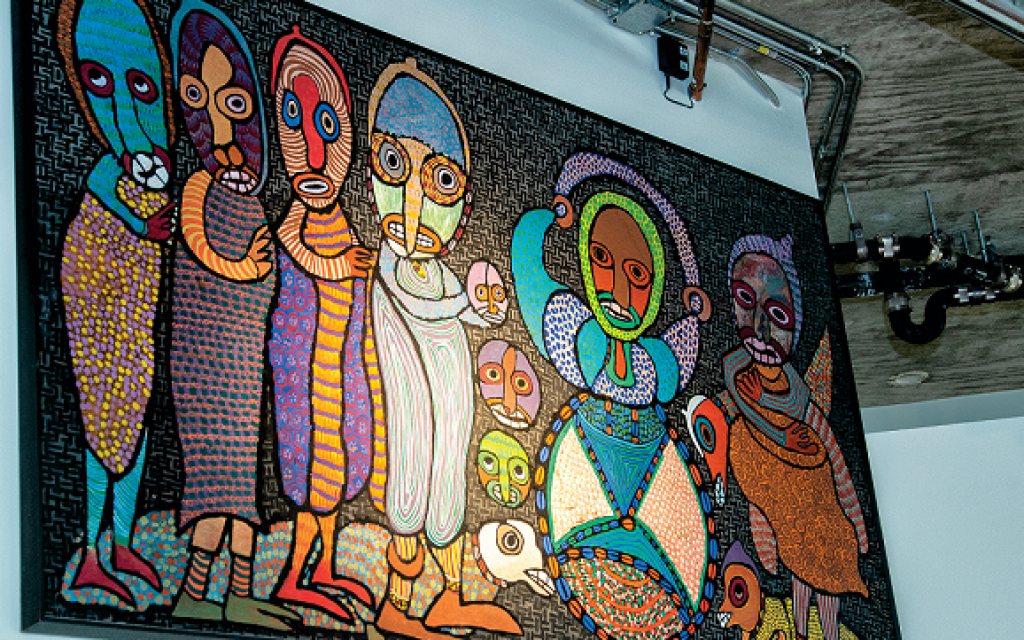
We had a circuitous experience in Oceana attempting to bring back a wooden piece through the Sydney airport. Australia is very careful about insects coming into their country. Ultimately, the sculpture had to be shipped here and put in the freezer to kill the possibility of bugs.
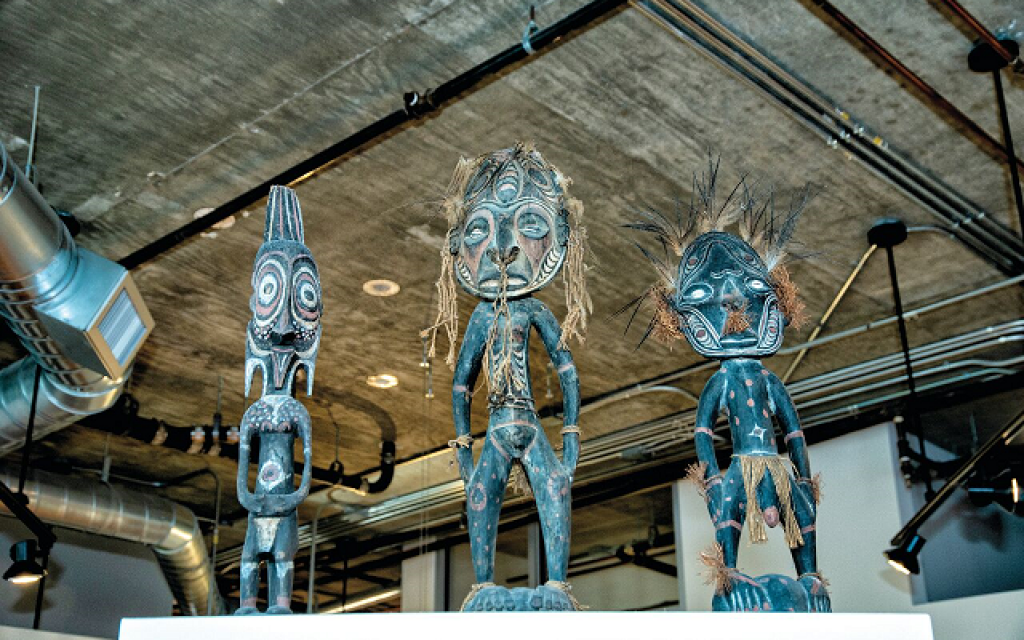
Shapiro: The Malaysian rice god is a wood sculpture made to protect the rice paddies. There is such a mixture here; the living room lamp is made from a 200-year-old Spanish vase.
Jaffe: You are best known for arguing and winning a federal jurisdiction cable TV case in the U.S. Supreme Court. What’s your role in accumulating these worldwide treasures?
Shapiro: Let’s just say I have done my share of carrying art and carved canes through the mud and hills. In my study, I have a Navajo sand painting from Spokane and a 1960s Navajo rug from Arizona. A totally different flavor.
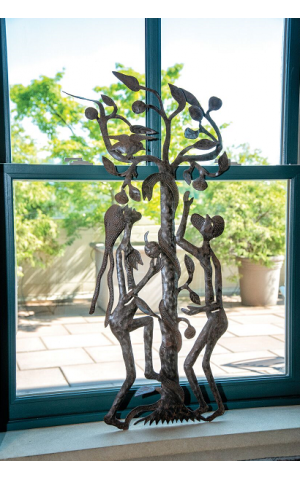
Jaffe: What are some of the most unusual pieces you have?
Kremer: The metal Haitian “Adam and Eve” gaze outdoors from the kitchen.
The most unusual may be the “The Comfort of Prayer,” a life-size chair by Richard Dial. Only three were made, and one is in the Museum of Modern Art.
We have two found metal pieces by Charlie Lucas. The dramatic glass woman at the entrance is “Afro Doll” by Gavin Heath from Cape Town, South Africa. The wood box by Po Shun Leong is intriguing.
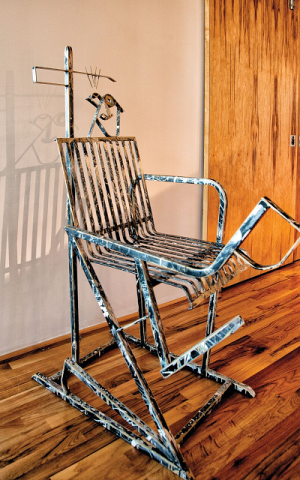
We have a Henry Easterwood textile mounted very high up in the powder room. At the time he was the only non-architect to win the Pritzker Prize (endowed by the famous Jewish Chicago family).
In the china cabinet we have pieces by Picasso and Denmark’s Bjorn Wiinblad.
Jaffe: Who are some of the artists you collect?
Kremer: This follows my journey from Colorado via Memphis to Atlanta.
As an art student in Denver, one of my paintings is in our master bedroom directly opposite fellow student Bob Grimes’ oil. He was the only student whose works were accepted in the Denver Art Museum. Both are colorful abstracts.
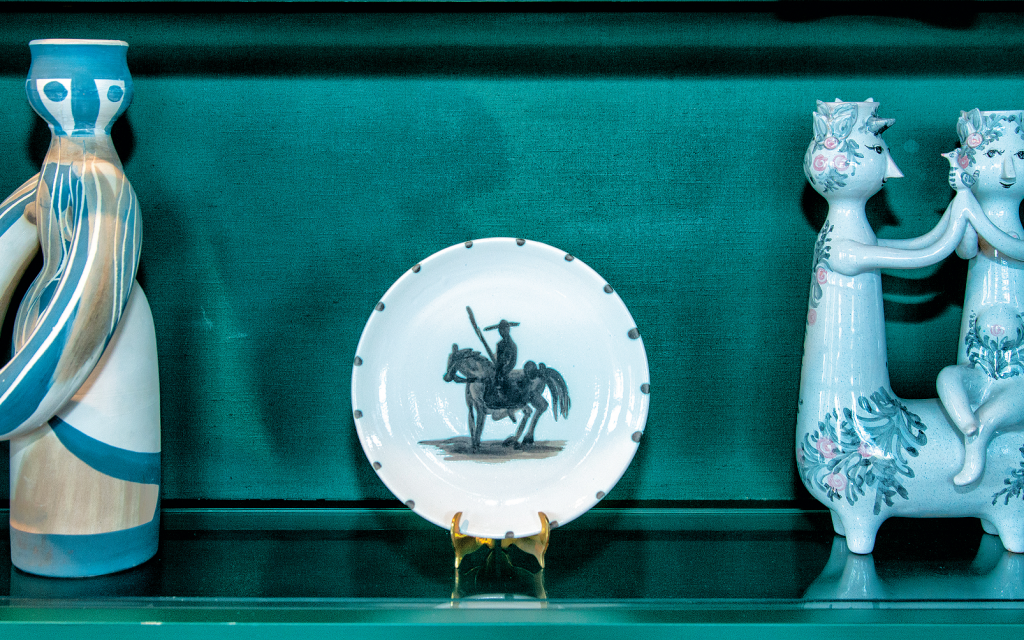
“Cloud Bands” (1974) is by Burton Callicott, a former professor at the Memphis Academy of Art. Jason Williamson also from the Memphis Academy, did “Caged Lion.” Ida Kohlmeyer (Tulane University/Newcomb College professor) uses exuberant colors and shapes.
There is an Indonesian wood carving of Hindu gods, Rama and Sita. The kitchen painting “Floral” by Memphis and Arkansas artist Mary Sims brings the tangerine shades into our sunny breakfast nook. The woodcut “Noel” also in the kitchen is by Memphis artist Edward Faiers.
Locally we have two pieces by Judaic artist Flora Rosefsky, who did our ketubah (wedding certificate) in her inimitable style. She let me have a good deal of input.

Jaffe: Share the saga of how you acquired this Memphis piece by Cloar.
Kremer: Fifty years ago, I wanted to buy this piece by Carroll Cloar, “T Boys and Brothers and Sisters,” where the painting’s back had names Cora Lee, Willie B, Bulah, Lurline, Scooter and Starvester. He was not very prolific and needed it to go to New York for a gallery show. I could not afford his gallery prices, so off it went to New York. It did not sell because MLK was assassinated. Months later he told me my painting had returned.
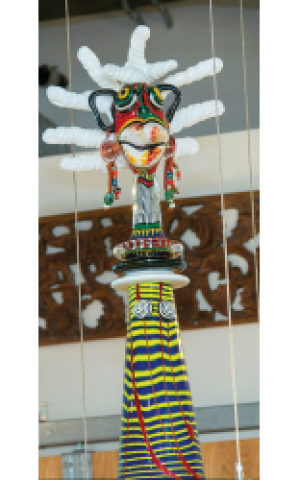
Jaffe: Where are you off to next?
Kremer: We’re taking our youngest grandson to Tanzania. It has become our special gift for all of our grandchildren’s b’nai mitzvahs. We’ve taken them one at a time to Turkey, Thailand and the Galapagos, Spain, Peru, South Africa, Botswana and Zambia. My goal is for them to experience another culture and for us to have a special time together. That way George isn’t toting all the art!




comments